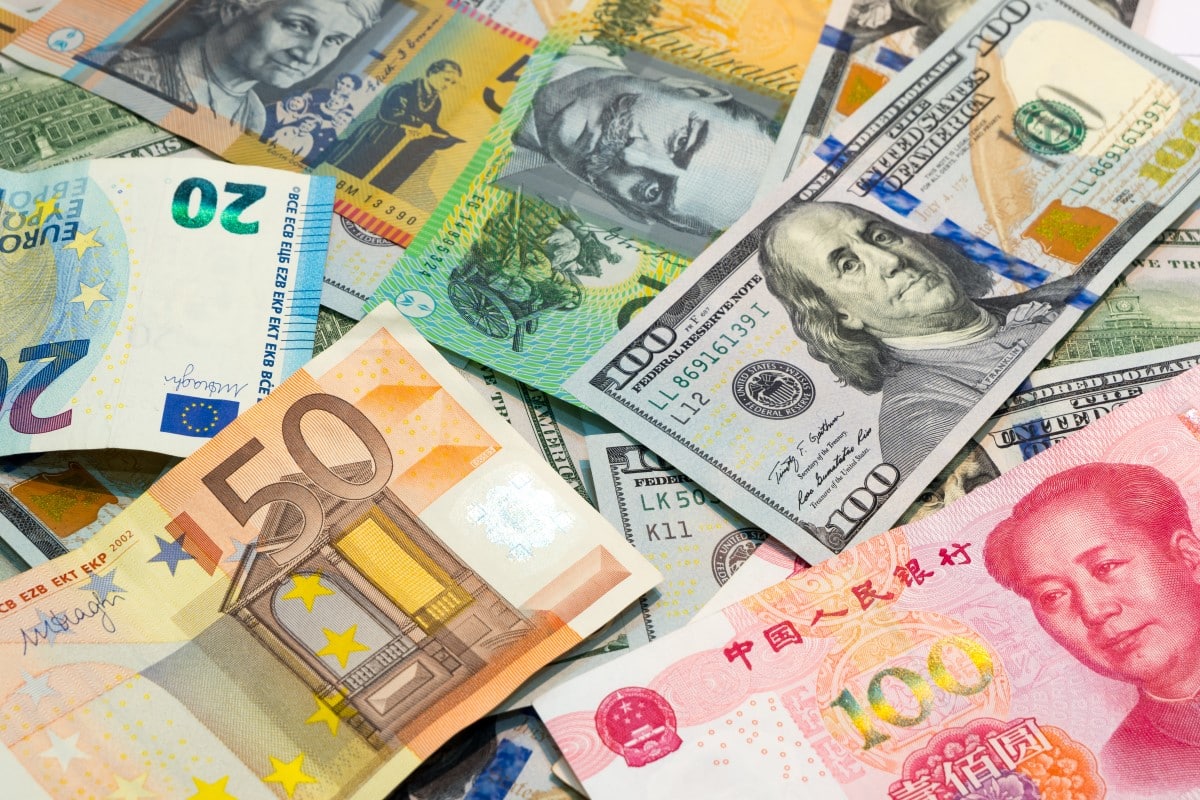
U.S. dollar dropped Tuesday while the Aussie and Kiwi soared
The U.S. dollar plummeted on Tuesday. Its index shaved off 0.1% to 104.04 against the basket of six major currencies. China announced that it would change its coronavirus quarantine rule for inbound travelers. The country is taking a big step in reopening its borders. This news supported the risk-in currencies like the Australian and New Zealand dollars.
According to the government’s statement, inbound travelers won’t have to go into quarantine on arrival. The National Health Commission stated that the change would become effective starting January 8. China has also downgraded some regulations for managing coronavirus cases even though the rate of infections has increased.
On Tuesday, the offshore Chinese yuan climbed up by 0.1% to 6.9686 per USD. The Aussie also surged forward by 0.5% to $0.6765. Moreover, the New Zealand dollar skyrocketed by 0.7% to $0.6316. The trading was mostly thin during the year-end holiday season, though.
Christopher Wong, a currency strategist at OCBC, noted that China seems determined to continue easing its COVID-19 restrictions, despite the rise in virus cases in the mainland. This might be the indication that Chinese policymakers are committed to full reopening. Wong also added that according to reports, the country is planning to take extraordinary measures to support economic growth.
How are the Euro, Pound, and Japanese Yen faring?
The sterling moved in the narrow range as the U.K. markets closed for a public holiday. The pound remained mostly flat versus the greenback, exchanging hands at around $1.2071. On the other hand, the Euro jumped by 0.2% against the dollar to $1.06545. The common currency also gained versus the Yen, trading at 141.89.
China’s lessening of its zero-COVID policies could give the common currency an additional boost. The Euro has already rallied after the ECB took a much harder line on inflation than traders expected. Strategists at Danske Bank noted that a faster end to coronavirus restrictions could support the Chinese economy, as well as bolster the eurozone and the single currency.
On Friday, new data showed that U.S. consumer spending climbed up only slightly in November. However, inflation lowered further, supporting investors’ expectations that the Fed would lessen its aggressive monetary policy tightening.
ING FX strategist Francesco Pesole stated that December had been a soft month for the U.S. dollar due to the seasonal trend. The greenback jumped in each of the past four years in January. Thus, the analyst thinks that it will recover in early 2023.
Meanwhile, the Japanese yen tumbled by 0.2% versus the dollar to 133.07. Short-term government bond yields rallied to their highest level in over seven and a half years, but that news didn’t strengthen the Yen.
Still, the currency seems set for its biggest quarterly surge against the greenback since 2008. Overall, it gained 8.1% after the Bank of Japan’s unexpected decision to adjust its monetary policy last week. On Monday, BOJ Governor Haruhiko Kuroda stated that the country wouldn’t exit from its ultra-loose monetary policy in the near term. But policymakers are currently focused on what comes after Kuroda’s term ends in April 2023.
How are the EM currencies faring?
Most Asian currencies soared today. The South Korean won skyrocketed to a six-month high in a holiday-shortened week. Chinese stocks also jumped after the country’s announcement. The South Korean won added 0.6%, while China’s stock benchmark climbed up by 0.5%. The Shanghai Stock Exchange also increased by about 0.9%.
Moh Siong Sim, the FX strategist at the Bank of Singapore, noted that Asian currencies firmed a bit due to China’s reopening, adding that Forex markets are moving in the right direction in the medium term.
Most Asian currencies traded in the green on Tuesday. The Thailand baht, Singapore dollar, and Taiwanese dollar jumped between 0.1% and 0.2%, along with the Malaysian ringgit. However, this year was hard for EM currencies. The Singapore dollar is the only one that has logged gains this calendar year. Most other currencies have dropped by more than 5% thus far this year.
On Friday, U.S. personal consumption expenditures (PCE) print increased the prospects of smaller rate hikes from the Federal Reserve, even though recession fears remained. This news supported the EM currencies, though. Multiple Asian stocks surged forward, as well, with Singapore, Indonesia, Taiwan, and the Philippines rallying between 0.3% and 0.8%.




